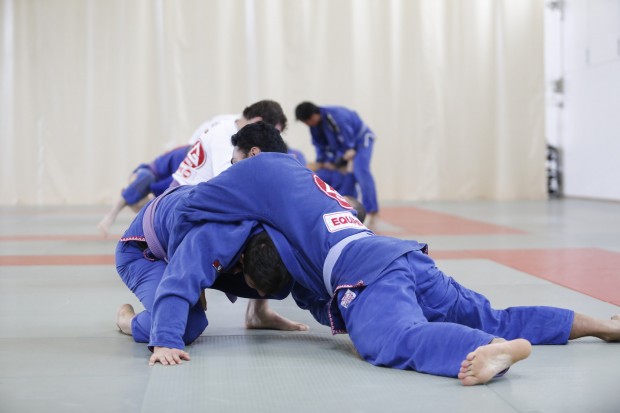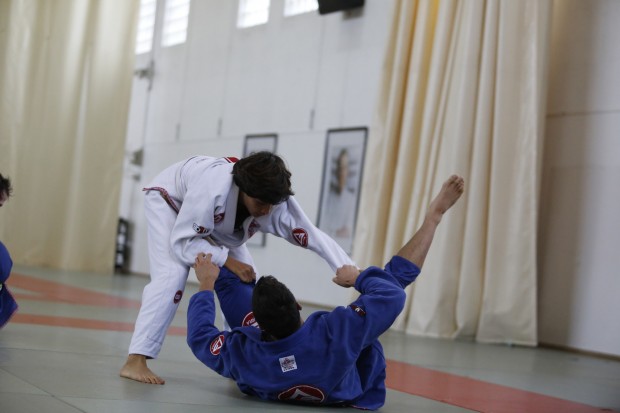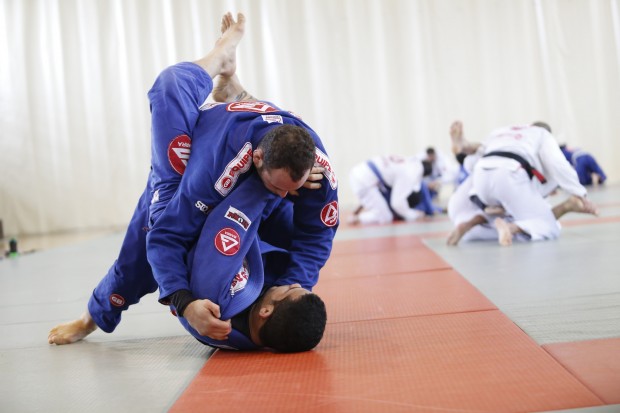5 Things to Drill in Bjj
It is no secret that many of the top competitors are strong believers in drilling techniques in bjj. One multiple time World BJJ Champion said that he believed 60% of your training time should be spent drilling.
It is great fun to roll and free sparring is one of the most important parts of your jiu-jitsu training. But it is difficult – especially for newer students – to get to some of those positions in sparring, let alone actually successfully pull off the move!
One must walk before they can run and drilling is an excellent way to bridge between first learning a new technique and adding it to your game in live rolling. You can bet that for every top competitor that you see famous for a certain sweep, pass or submission, that they have drilled it literally thousands of times!
read also: Specific Training: A Great Training Method
Here are 5 drilling ideas for you:
1) Takedowns
Don’t be that bjj guy who has ZERO takedowns and can only jump to guard. Master Carlos Gracie Jr. believes in a complete jiu-jitsu that includes the ability to fight standup and take your opponent to the ground.
The judo training method called “uchkomi” (translated as “winding in”) involves repetitions of stepping in for the entry portion of your takedown technique. You don’t complete the technique and throw each rep, just perform the entry quickly and precisely.
It is the foundation of judo training and hundreds of repetitions of your favourite throw can be practiced as a warm up for your training. Pick your favourite 3 throws and get good at them.
Bruce Lee said it best: “I fear not the man who has practiced 10,000 kicks once, but I fear the man who has practiced one kick 10,000 times.”
2) Solo body movements
This is one of the most common training questions – especially among those students whose schedules do not allow them to attend class as often as they wish. Looking for a way to train even without a partner, one can drill solo movements – hip escapes, bridges, various bjj centred calisthenics, natural natural exercises.
A simple Youtube search will give you dozens of ideas on solo drills.
Some jiu-jitsu students have purchased grappling dummies or CXT (Combat X Trainer) to perform a variety of drills without a partner. If you have a few puzzle mats that you can lay down in your garage, you can get in some repetitions even when it is not possible to get into the academy.
3) Transitions
One grappling coach said to me “Most of the students know all of the important submissions. The question is: CAN you GET to those positions?”. A window of opportunity to catch a position or submission may exist for the briefest of seconds. Drilling your entry or transition can help you make it as smooth and precise as possible.
The difference between you catching and missing the position might be drilling the technique until it becomes almost automatic.
ex. I wanted to add a back take to my game. From side control, I needed to quickly spin to the opposite side of my opponent to catch their back.
I convinced several training partners to “dummy” for me and I repeated the technique hundreds of reps until my movement became razor sharp.
I was able to start using it in live sparring against purple belts ONLY after first ripping it out through drilling.
4) Submissions
I know one famous instructor who has a Month / 500 repetition challenge to students. If they REALLY want to learn how to perform a triangle choke from guard, he tells them to set a goal of performing 500 repetitions of that triangle in a single month.
When asked “Is it better to put my leg like this or like this?” he answered “After 100 repetitions, YOU tell ME!”
You will also condition the specific muscles that you need to execute the technique and be able to perform the movement as efficiently as possible.
* Performing your triangles when you are fatigued will force you to use proper leverage and technique in the absence of strength.
Most often, you ARE tired during a competitive roll and need to use technique when the power and strength are gone.
5) Positional escapes
We all have weak parts to our game. In the first 2 years of training, you need to develop your bottom escapes as that is where you tend to find yourself. Escaping from the bottom nearly always involves a coordinated bridge and shrimp movement. This is not intuitive to most of us and we must drill it until it becomes instinctive.
Here is how to improve your positional escapes
a) Ask yourself “Where do I get stuck most often in rolling?”.
b) Get your professor to suggest a specific escape for this situation
c) Drill it with a partner until it becomes smooth. * Make sure to drill BOTH sides, not only your right. You can not choose which side to defend from!
How do you drill in bjj class?
read also: The 5 Commandments Of Escaping from the Bottom
Credits: Mark Mullen
Gracie Barra Black belt based in Asia
Twitter: @MarkMullenBJJ



